Sony X85L is a model from 2023 that will continue to be available in the 2024 range from the Japanese manufacturer. Its biggest advantage is the Google TV system. It currently provides the greatest access to applications, so we don’t have to worry about missing any of our favourite apps. The intuitive interface and voice control feature using Google Assistant make daily use of the television convenient and modern. As for picture quality, Sony X85L performs well. Thanks to local dimming (albeit with a very mediocre number of zones), black levels look quite decent. Additionally, its fairly high brightness allows for comfortable TV viewing during the day, even in well-lit rooms. Moreover, the television offers a program recording feature from built-in tuners, which is a great convenience for those wanting to control what and when they watch. In terms of motion smoothness, X85L also does not disappoint. The 120 Hz panel and Motionflow system provide smooth display of dynamic scenes, which will satisfy both movie lovers and sports fans. The television is also equipped with a range of features for gamers, including VRR, Game Bar, and G-Sync support, making it an attractive choice for gaming enthusiasts. Of course, the television is not without its flaws. The lack of HGiG support and high input lag in Dolby Vision mode may be disappointing for more demanding gamers. Additionally, the compromise between font readability and smoothness of the image when connected to a PC may not appeal to everyone. Nevertheless, Sony X85L is a decent piece of equipment that is particularly worth considering if it can be purchased on sale.
- Matching (Score)
- Our verdict
- TV appearance
- Where to buy
- Contrast and black detail
- HDR effect quality
- Factory color reproduction
- Color reproduction after calibration
- Smoothness of tonal transitions
- Image scaling and smoothness of tonal transitions
- Blur and motion smoothness
- Console compatibility and gaming features
- Input lag
- Compatibility with PC
- Viewing angles
- TV efficiency during daytime
- Details about the matrix
- TV features
- Apps
- Playing files from USB
- Sound
Sony X85L vs Hisense U7Q PRO
Direct compare
X85L
U7Q PRO / U78Q PRO


Resolution: 3840x2160
System: Google TV
Model year: 2023
Complete the survey to find out the result

Panel type: LCD VA
Resolution: 3840x2160
System: VIDAA
Model year: 2025
Complete the survey to find out the result

Overall rating
7.0
7.4
Movies and series in UHD quality
6.4
7.2
Classic TV, YouTube
6.3
7.1
Sports broadcasts (TV and apps)
6.6
6.7
Gaming on console
7.8
8.3
TV as a computer monitor
5.6
8.2
Watching in bright light
6.5
6.2
Utility functions
8.3
9.4
Apps
9.6
7.7
Sound quality
6.9
7.8
Complete the survey to find out what fits your preferences
Advantages
Expanded Google TV System
Decent contrast
Good brightness
Gaming features - VRR, Game Bar and G-Sync
Base with adjustable legs
Excellent contrast and black - true Mini-LED backlighting with VA panel (65")
Very good motion fluency - 4K@165 Hz panel
Very high HDR brightness - even above 1500 nits
Perfect for gaming - Low input lag, VRR, ALLM, 4x HDMI 2.1, 288Hz at 1080p.
Vidaa operating system has many features like Airplay, USB recording
Outstanding quality of tonal transitions
Disadvantages
No support for HGiG, Dolby Vision with high input lag
Font readability issues on PC at 120 Hz
Only 2 HDMI 2.1 ports - one of which serves as eARC
No support for HGiG
Average viewing angles
Missing apps on the VIDAA platform
Our verdict
The U7Q PRO is a TV that makes it clear within minutes: "speed is what matters here". Hisense has surprised us with how much they’ve packed into a device that doesn’t cost a fortune. A refresh rate of 165 Hz in 4K, and even 288 Hz in Full HD – not long ago, such figures were reserved exclusively for top-end gaming monitors. And here we have a mid-range TV with almost a full suite of features for gamers, confidently throwing down the gauntlet to much pricier competitors. But it doesn’t stop at speed. The U7Q PRO also boasts a very bright screen, peaking at an impressive 1500 nits. Like every Mini-LED, it has its typical "moods", occasionally exaggerating the image, but the overall visual effect remains very positive – especially in HDR content. It’s also worth mentioning the Vidaa operating system – fast, intuitive and equipped with features like AirPlay, a voice assistant, and a web browser. While it doesn’t offer the full range of apps found on Android, in everyday use the system performs exceptionally well. So, why is it “almost” perfect for gamers? It just lacks the HGiG feature, which allows for precise adjustment of brightness levels in HDR games. It’s a minor drawback, but it can be significant for console purists. Nevertheless, the U7Q PRO remains a very solid proposition – and a testament to the fact that Chinese manufacturers have not only caught up with competitors from Korea and Japan, but in some aspects have even begun to overtake them.
TV appearance




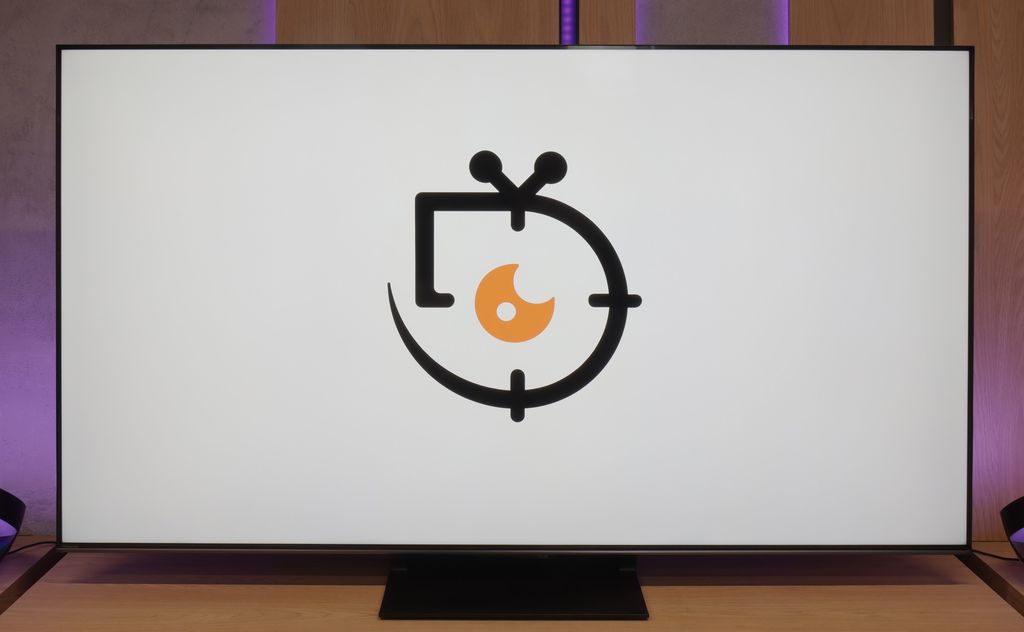
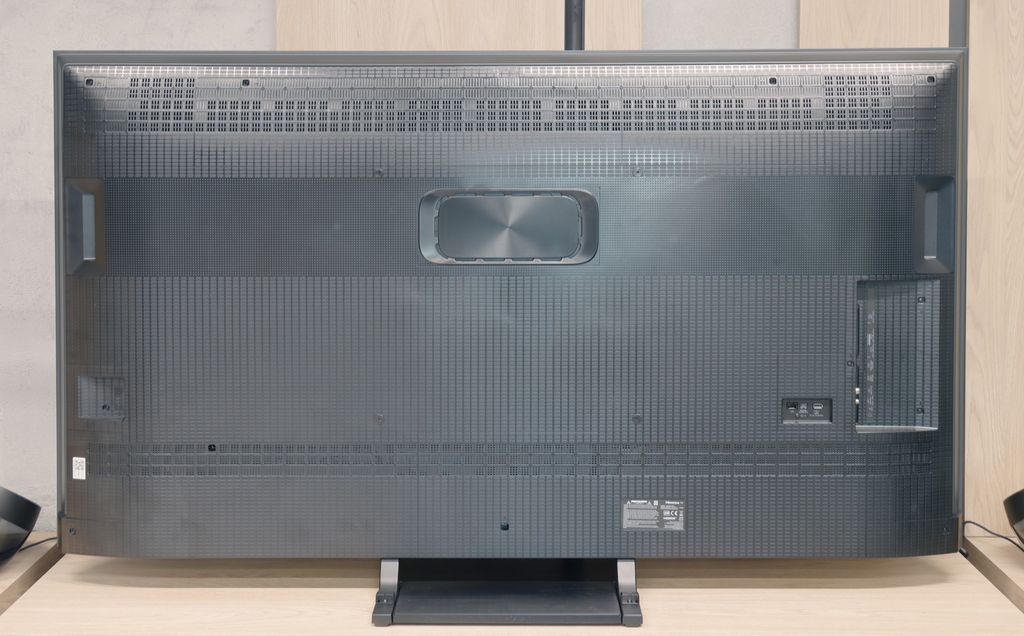
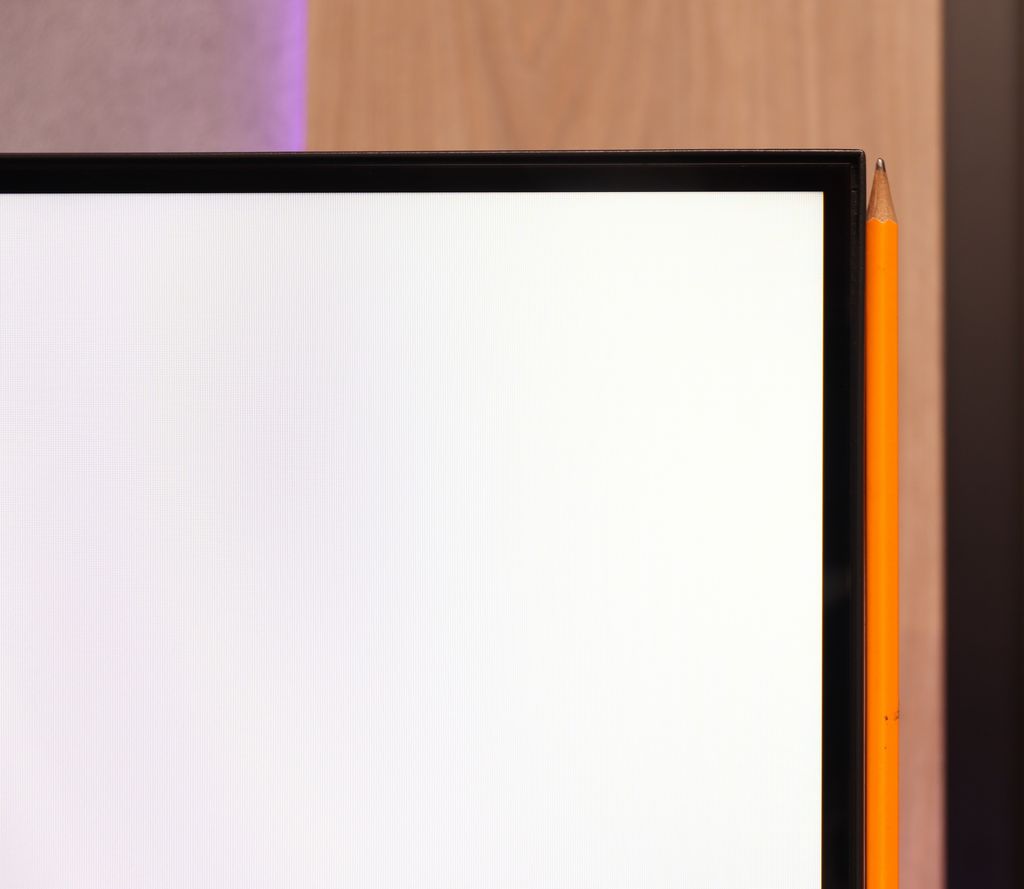

Contrast and black detail
6.7/10
8/10
Local dimming function: Yes, number of zones: 24 (4 x 6)
Local dimming function: Yes, number of zones: 560 (20 x 28)
Contrast:

Result
8,700:1

Result
7,800:1

Result
19,200:1

Result
5,750:1

Result
5,150:1

Result
340,000:1

Result
62,850:1

Result
42,000:1

Result
11,100:1

Result
7,500:1
Halo effect and black detail visibility:

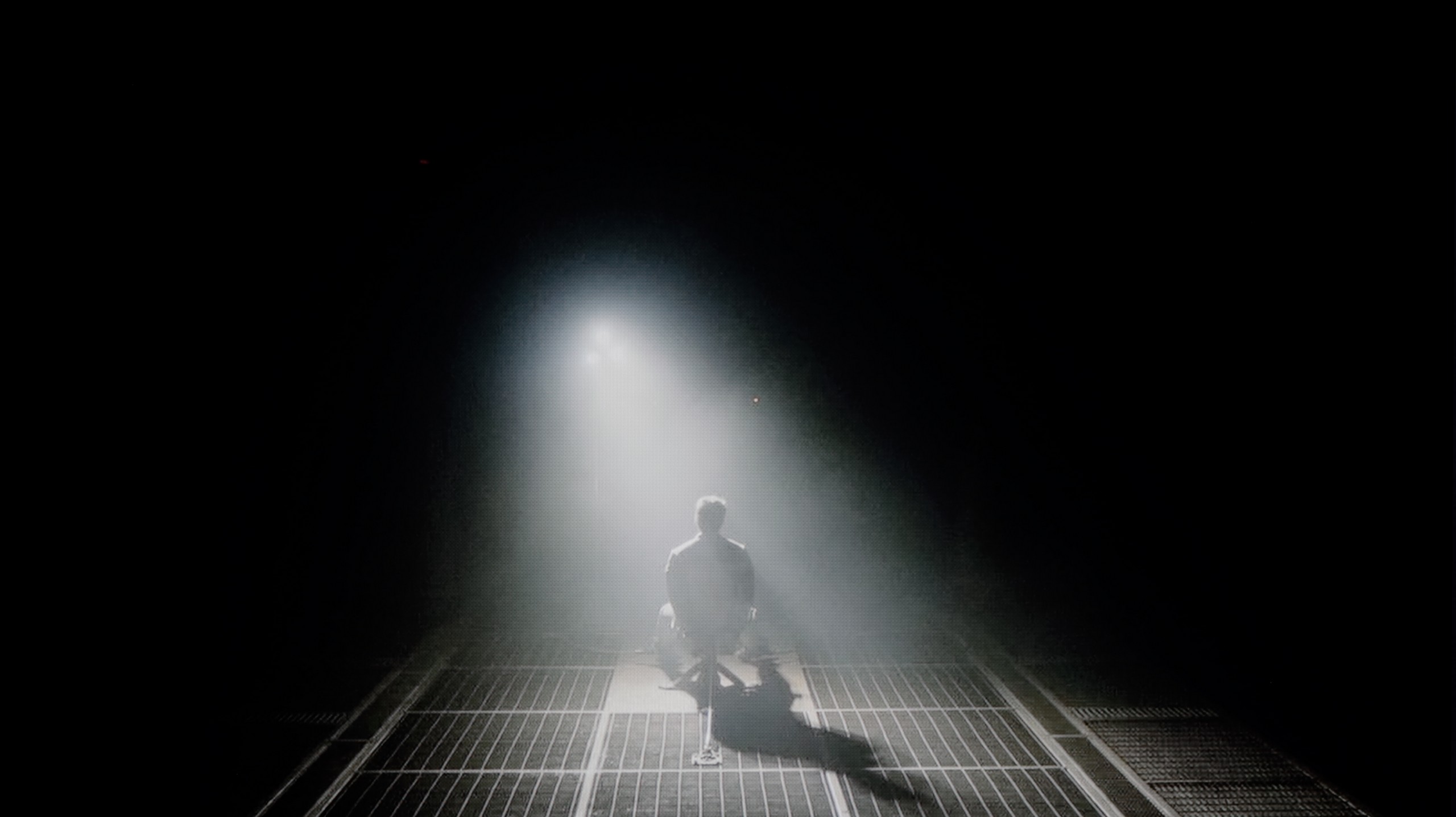
The Sony X85L television is equipped with a VA panel, which offers quite decent contrast on its own. Additionally, this model features local dimming technology – in the 55-inch version, it includes 24 zones. Although this number isn’t impressive, it naturally increases with the size of the television. The contrast in the X85L is good, though not the best, especially compared to other televisions also equipped with advanced local dimming technology. Results at a level of 8000:1 are satisfactory, but they average out against the competition. In some cases, such as the third scene from the movie Arrival, the contrast is promising and performs quite well. This is thanks to the very good dimming algorithm that Sony has been using in its televisions for years. Unfortunately, due to the limited number of local dimming zones, the television struggles with noticeable blooming, which can be seen in scenes with the helicopter from the movie Sicario 2.
Hisense U7Q PRO is a mini-LED television with a VA panel and – in the version we tested, 65 inches – 560 local dimming zones. It's worth noting straight away that this number varies depending on the size – larger diagonals get more zones, while smaller ones get fewer accordingly. But regardless, the dimming system itself works really solidly here.
The contrast is genuinely very good for the price range in which this model is placed. In optimal conditions, the U7Q PRO can achieve results close to six-figure values, which until recently was reserved for much higher-end equipment. In practice – in scenes like the one from the film Oblivion – the picture looks stunning. With the lights on in the room, it's hard at first glance to distinguish this TV from organic screens. Of course, it’s still an LCD with local dimming, so compromises are unavoidable. In more challenging scenes, where there are many small light sources, the U7Q PRO tends to dim too aggressively. Instead of a slight degradation of black – some details that should be visible disappear. This is a side effect of the algorithm, which firmly adheres to the principle of “black should be black,” even at the expense of subtle elements in the picture.
But nonetheless – contrast is one of the stronger points of this model.
HDR effect quality
5.8/10
6/10
Luminance measurements in HDR:

Result
736 nit

Result
415 nit

Result
535 nit

Result
249 nit

Result
599 nit

Result
1129 nit

Result
323 nit

Result
721 nit

Result
267 nit

Result
736 nit
Scene from the movie “Pan” (about 2800 nits)

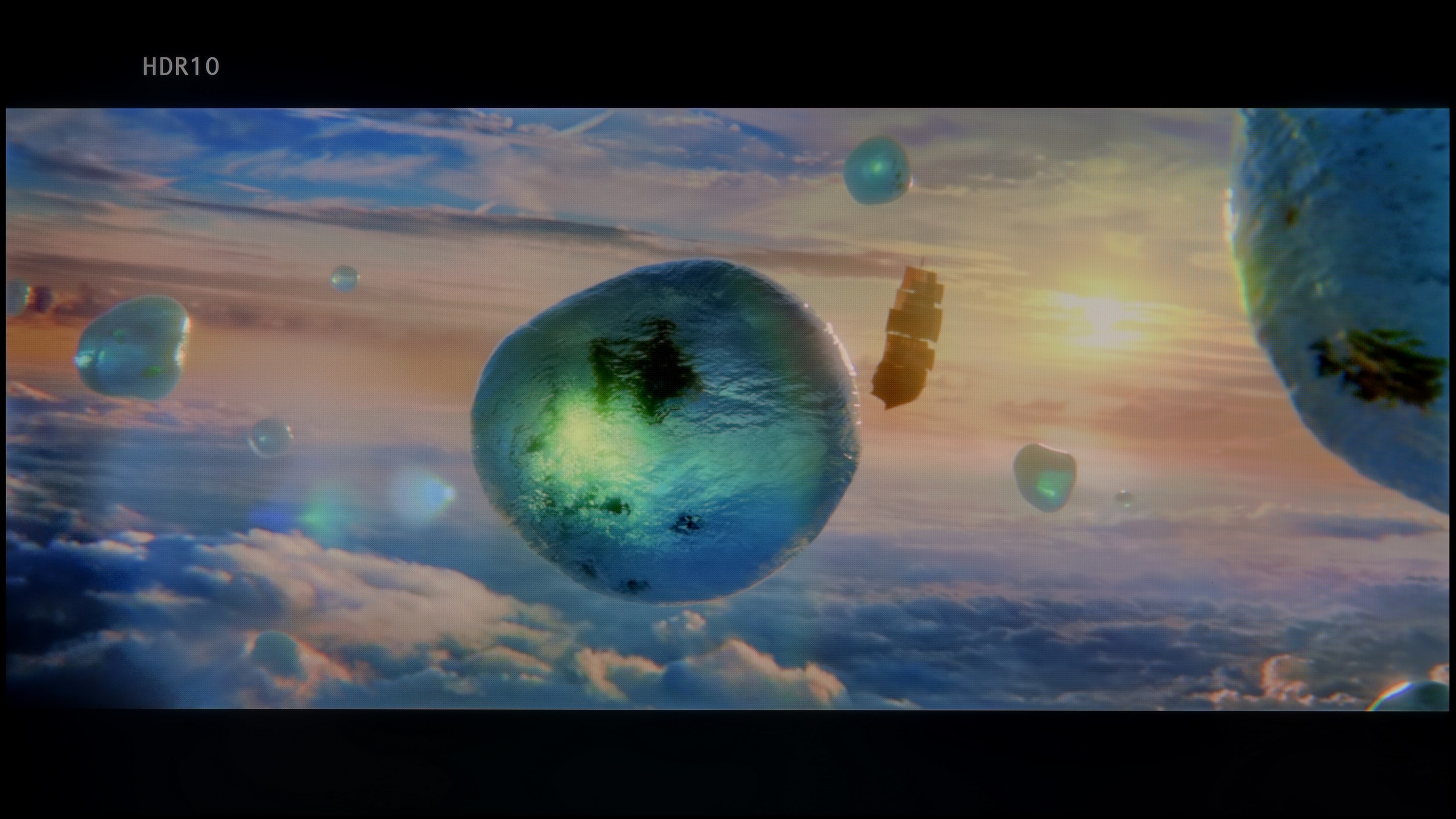
Scene from the movie “Billy Lynn” (about 1100 nits)


Static HDR10


Dynamic: Dolby Vision
Dynamic: Dolby Vision


HDR luminance chart:
Hisense U7Q PRO
Luminancja HDR
Luminance of RGB colors
Sony X85L
Luminancja HDR
Luminance of RGB colors
The Sony X85L TV offers solid HDR performance with a brightness of 750 nits, which is sufficient to enjoy vibrant effects. In scenes of moderate difficulty, such as the first, third, or fifth test scenes, a brightness of around 600 nits allows you to fully experience the HDR effect. Unfortunately, in more demanding segments, like the scene from the film Sicario 2, the TV reveals its limitations. Drops in brightness to 250 nits make the HDR effect lose its impressive quality and resemble ordinary SDR. Nonetheless, it is worth highlighting the very good coverage of the DCI-P3 colour palette at 95%, which definitely deserves praise and positively impacts the overall image quality.
U7Q PRO is truly a bright television. In synthetic tests, it achieved over 1500 nits, which is an outstanding result for this price bracket. Such brightness – at least in theory – allows it to display HDR content as intended by the creators, even in more demanding scenes with strong lighting. In practice, it performs very well, but not always perfectly. In bright scenes with large areas – like the test screen with intense sunlight from the film "Pan" – the U7Q PRO makes a huge impression. It can even dazzle with its light, which is definitely an advantage in the context of HDR content. Unfortunately, it doesn’t always manage to maintain this when there are many small bright details on a dark background. In such moments, the local dimming algorithms tend to dim some bright elements to maintain good blacks – and the side effect is that some details simply vanish from the frame. This is a classic compromise in mini-LED televisions – and the U7Q PRO is no exception. With such a large number of dimming zones, however, one could have hoped for a slightly more mature algorithm responsible for their control. Fortunately, the overall perception of HDR content is very positive. The U7Q PRO is not only bright but also colourful, thanks to the PFS LED (QLED) coating, the coverage of the DCI-P3 colour palette is at 95%, and BT.2020 around 73%.
Factory color reproduction
5.8/10
6.2/10


Factory Mode
After calibration


Factory Mode
After calibration
The television Sony X85L has been tested in IMAX Enhanced mode, which, while associated with world-class cinema, does not guarantee an image consistent with the director's intent. The main issue is the white balance – there is a noticeable strong dominance of blue and significant deficiencies in red. As a result, the image becomes unnaturally cool and looks artificial. Errors in colour reproduction were confirmed by the Colour Checker test, which showed significant discrepancies – colours were "scattered" like shots from a rifle, and only a few samples hit the target values. This clearly shows that the precision of colour reproduction leaves much to be desired.
The brightness of the image is one of the positive features of the television. The gamma for HD content is at an acceptable level, although minor errors occur, but generally it is quite good. However, the issue remains the brightness characteristic for 4K materials, controlled by the EOTF curve. It is evident here that very small, bright elements of the image are too dim, which is the result of the limited number of backlight zones due to the design of the television.
We tested the U7Q PRO in the best possible picture mode that this model offers – Filmmaker Mode. And indeed, this mode performs the best in terms of colour reproduction. But that doesn’t mean it’s perfect. In our test unit, both in SDR and HDR content, the image had a slightly cooler tone. The white balance was shifted towards blue, which made the overall image feel a bit "cooler." It may not be glaring, but it is definitely noticeable – particularly on white backgrounds, which instead of being neutral, seemed slightly bluish. Additionally – as we mentioned earlier – the television has a tendency to slightly brighten and oversaturate the image, which is also confirmed by the gamma and EOTF charts. All of this together means that without calibration, the image may appear somewhat unnatural – too cool, with slightly exaggerated dynamics. That’s why we decided to perform our own calibration – and you can see its effects and charts below.
Color reproduction after calibration
7.5/10
7.5/10

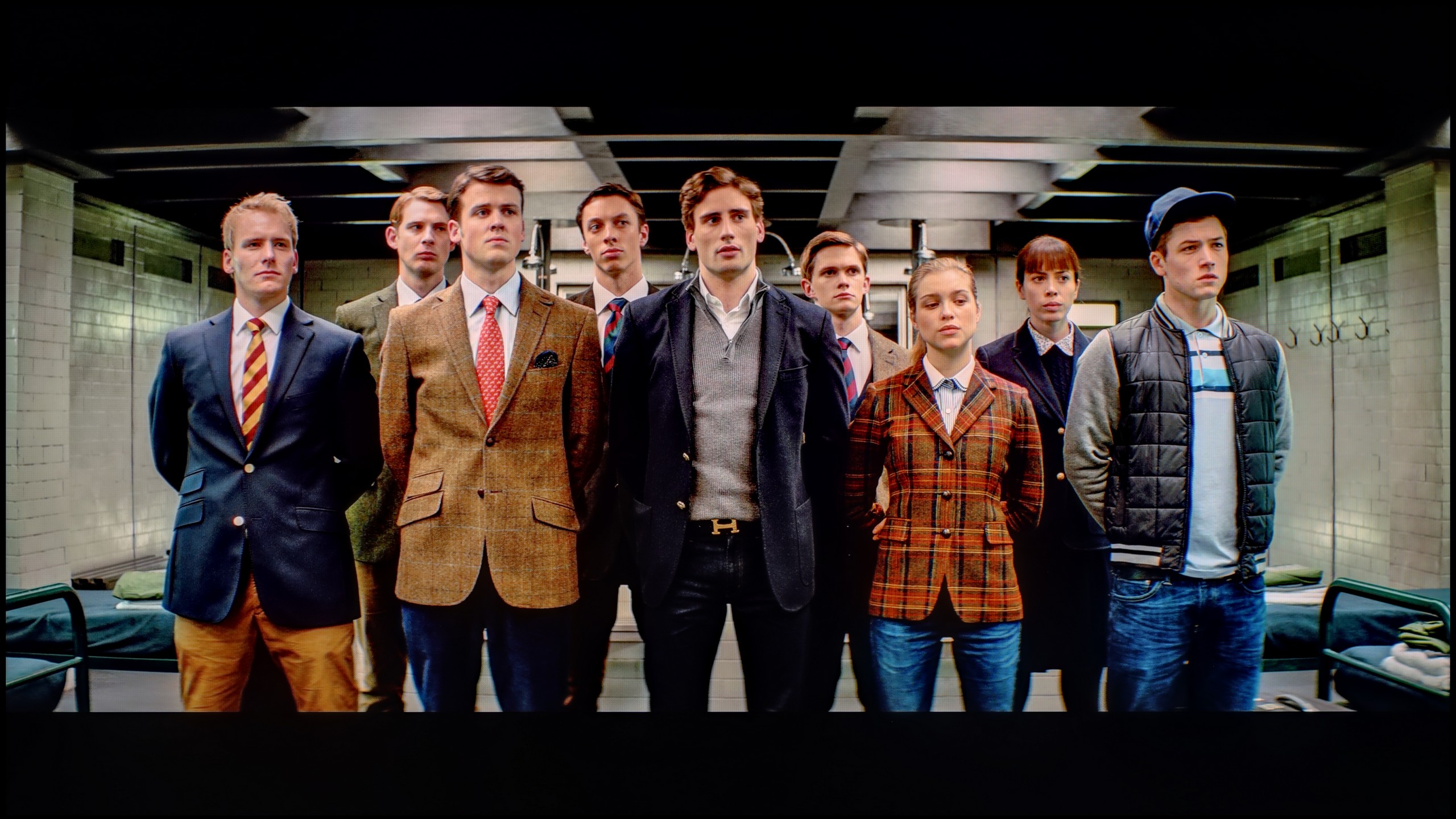


Thanks to the use of calibration tools offered by Sony X85L, it has been possible to significantly improve the image quality. After calibration, the white balance for HD content is much more stable, making colours look more natural and enhancing the authenticity of the image. Although it's not perfect, these changes allow viewers to enjoy a more realistic representation of colours, eliminating the earlier cool tone. The gamma, which already performed reasonably well, has been adjusted to an even better version. As a result, tonal transitions and brightness are more consistent, positively impacting the depth and detail of the image.
As for 4K content, despite efforts, the white balance still struggles with a lack of red, which can cause overly warm colours in some scenes. Synthetic tests showed that the EOTF curve in HDR is fairly stable, with a slight boost in mid-bright scenes. However, in actual film material, the TV can still be too bright with fine, light details, which is a result of the limitations of large local dimming technology.
Nonetheless, the calibration has brought significant benefits, particularly in terms of colour accuracy, improving overall image quality and providing a more natural and consistent directorial vision.
Thanks to calibration, we've managed to tame the white balance in SDR and HDR content. For SDR material, the effect is really quite good – the image becomes neutral, cohesive, and simply pleasant to watch. Everything looks the way it should.
HDR performs a bit worse. Although the white balance looks correct and overall the image gains naturalness, unfortunately, the delta E errors are still noticeable. Why? Because Hisense's U7Q PRO model does not give us full control over how the television manages brightness in HDR mode. And this is where the limitation arises. When we look at the EOTF curve for HDR content, it clearly shows what we mentioned earlier – at the beginning of the graph, there’s a noticeable drop, meaning the television darkens the smallest portions more than it should. On the other hand, those brightest elements can be overly bright. As a result, some details are lost, others are too aggressive, and overall control over brightness doesn't always align with what we’re trying to achieve during calibration.
Does the image look better after calibration? Definitely, yes, in terms of colour. But when it comes to brightness management in HDR, one must accept that the Hisense U7Q PRO will still do it in its own way.
Smoothness of tonal transitions
7.1/10
9.5/10







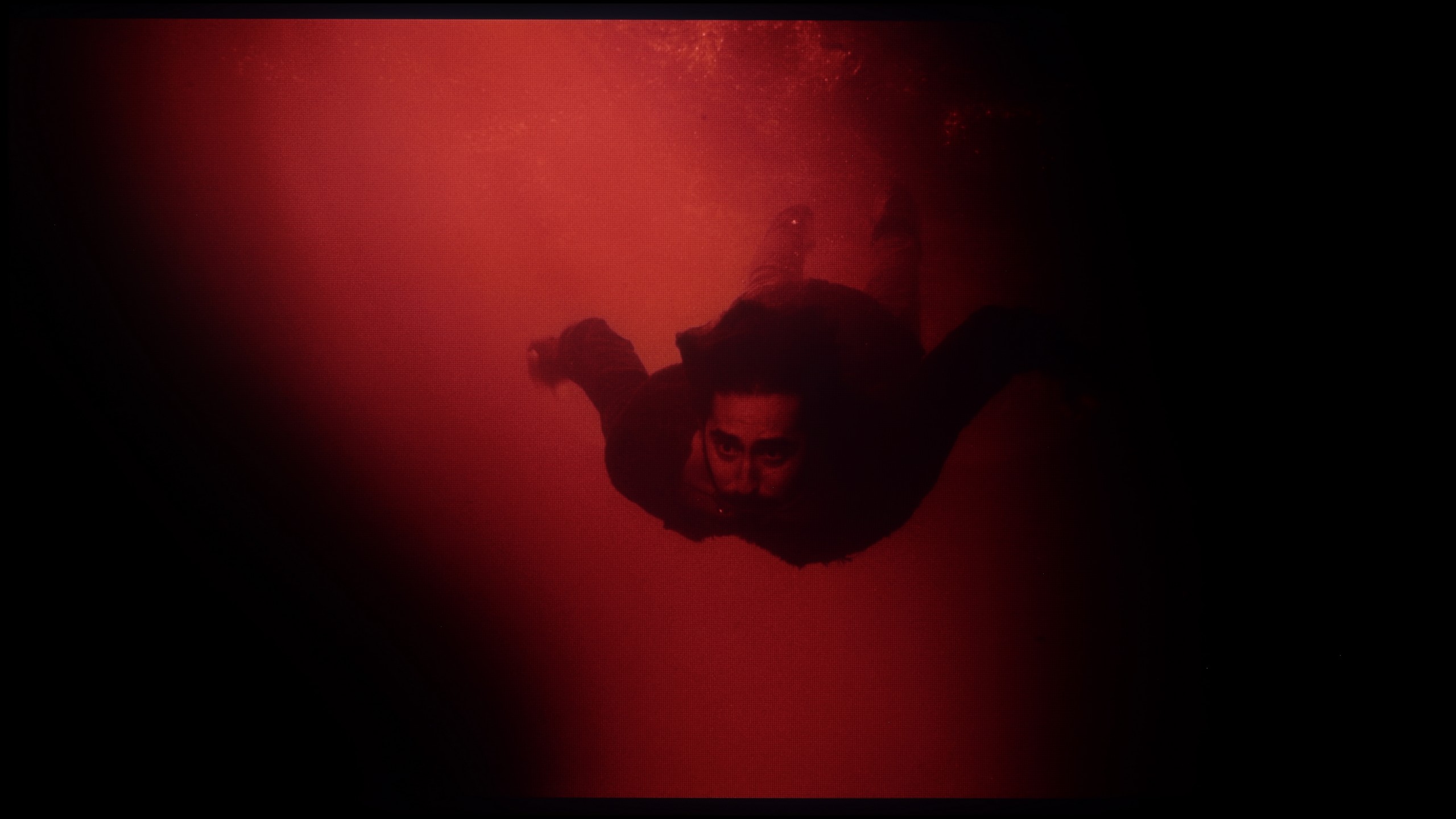




The fluidity of tonal transitions in Sony X85L is at a good level – the colour gradation is smooth, even in more demanding areas, making the perception of scenes positive and natural. The biggest issues arise in shadow areas, where subtle colour joins can be visible. Despite this, the television performs well enough that most viewers should not notice these minor imperfections.
The U7Q PRO handles tonal transitions really well. Colours blend smoothly, with no banding, stripes, or strange artefacts. Even in tougher scenes that typically expose any imperfections – there was nothing to criticise here. The picture simply looks clean. The gradients – both colour and grey – are fluid, nothing tears, nothing distracts. It's one of those elements you don't notice while watching… certainly not with the U7Q PRO.
Image scaling and smoothness of tonal transitions
6/10
7/10
Smooth transition function

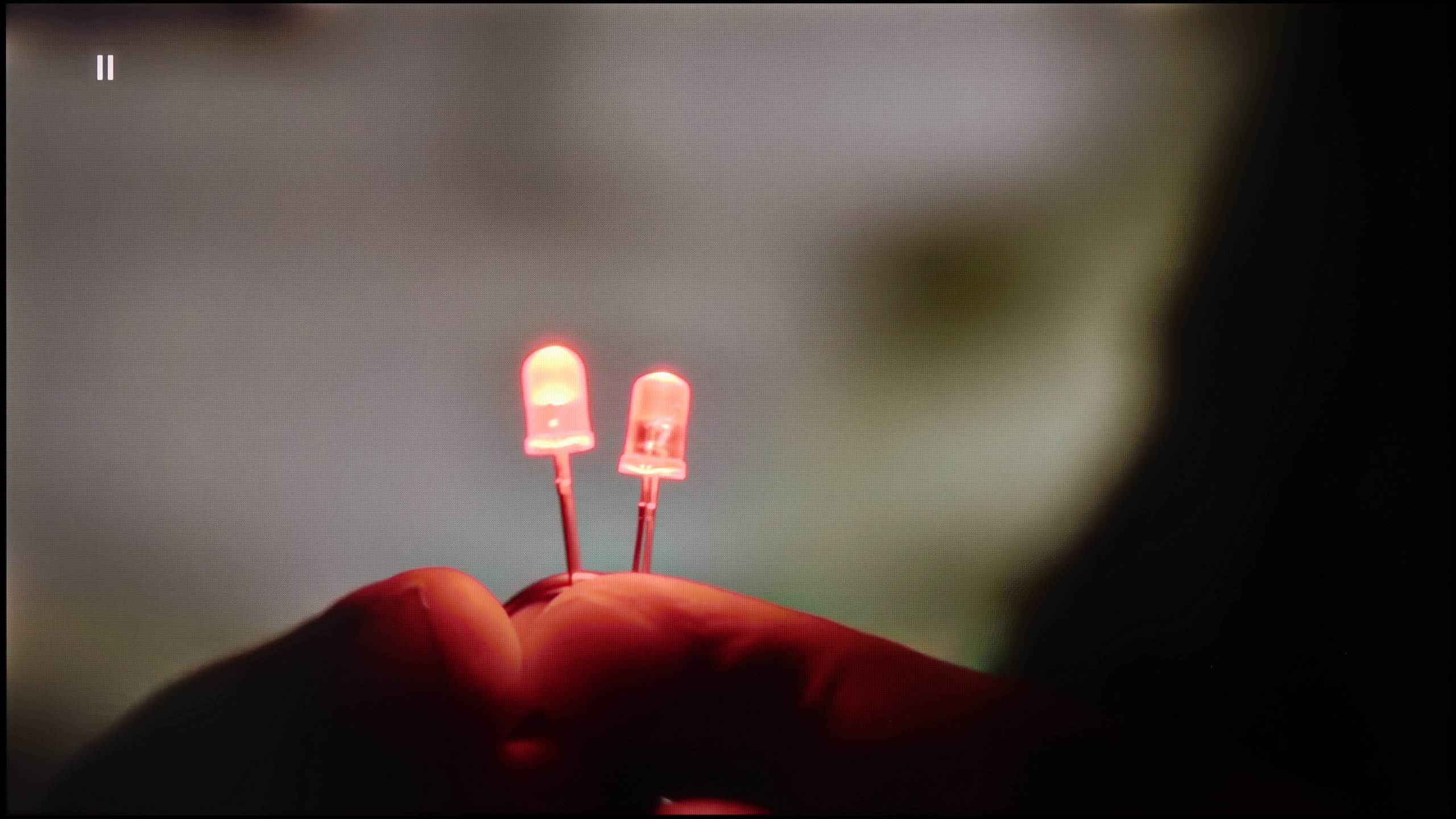
Image without overscan on the SD signal


In terms of smoothing tonal transitions, the Sony X85L television doesn’t offer any dedicated enhancement options, which is a bit of a downside. On the other hand, the image scaling performs quite well – the television adds a touch of artificial sharpness, which can make details such as tree branches more pronounced, although sometimes with visible jagged edges. This type of effect may appeal to some viewers who prefer a more detailed image.
If someone happens to come across older materials where the banding issue arises – Hisense has a solution for that. In the U7Q PRO, we find a feature called "Smooth and Gradient Picture". Set to the "Medium" level, it works really well – eliminating most gradient problems without smoothing the entire image like a blur in Photoshop. 😉 Film grain remains, details don't disappear – that's exactly how it should work. Well done on the implementation!
As for scaling weaker materials, it's simply good. It's not at the level of the most expensive TVs with advanced upscaling, but older content looks good. There is some minor banding at very low resolutions, but that's perfectly normal and hard to avoid. On the plus side – even with the oldest materials, there is no overscan effect, the image isn't cropped or artificially stretched.
Blur and motion smoothness
8/10
7.5/10

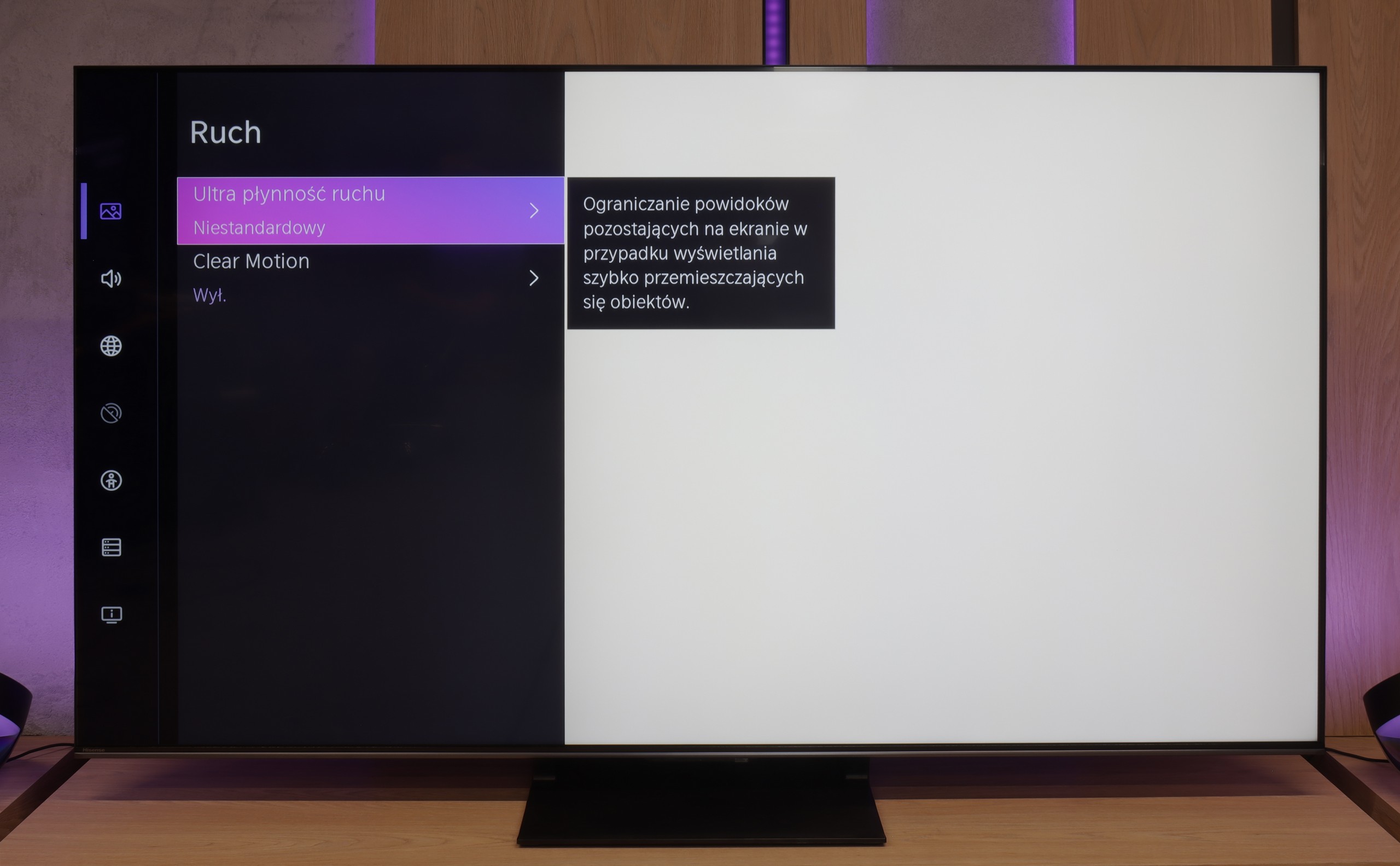
Blur (native resolution, maximum refresh rate):



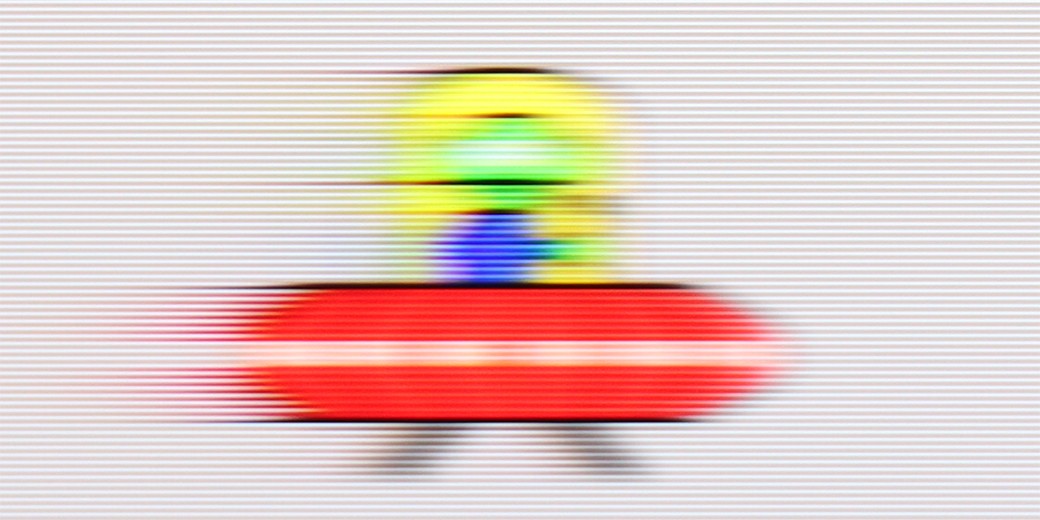
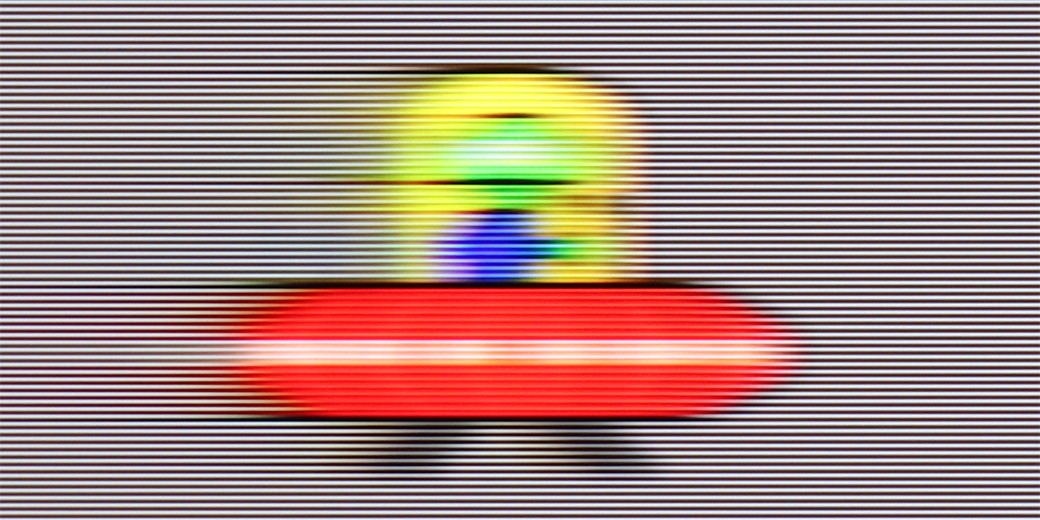
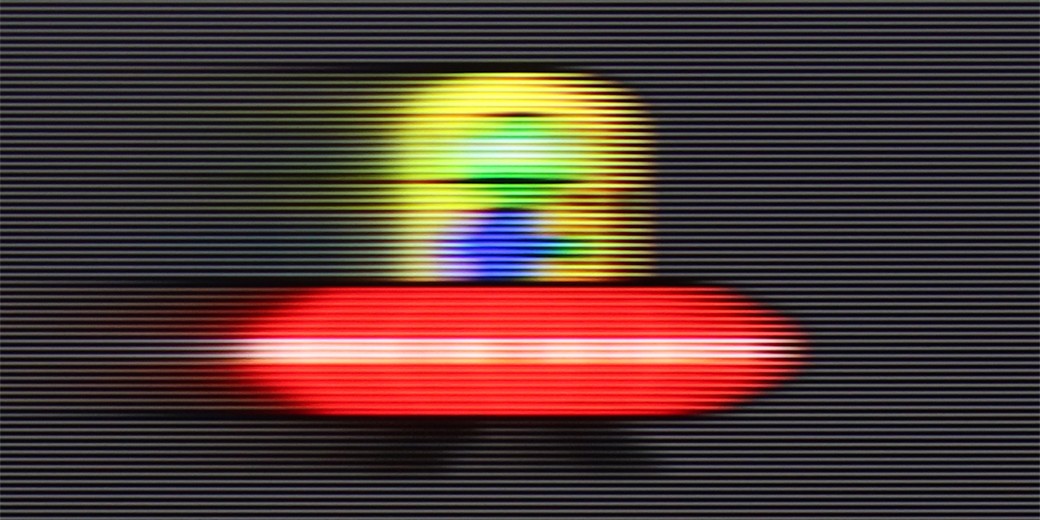
Blur (BFI function enabled):






Smużenie ():
Smużenie (1080p 288Hz):

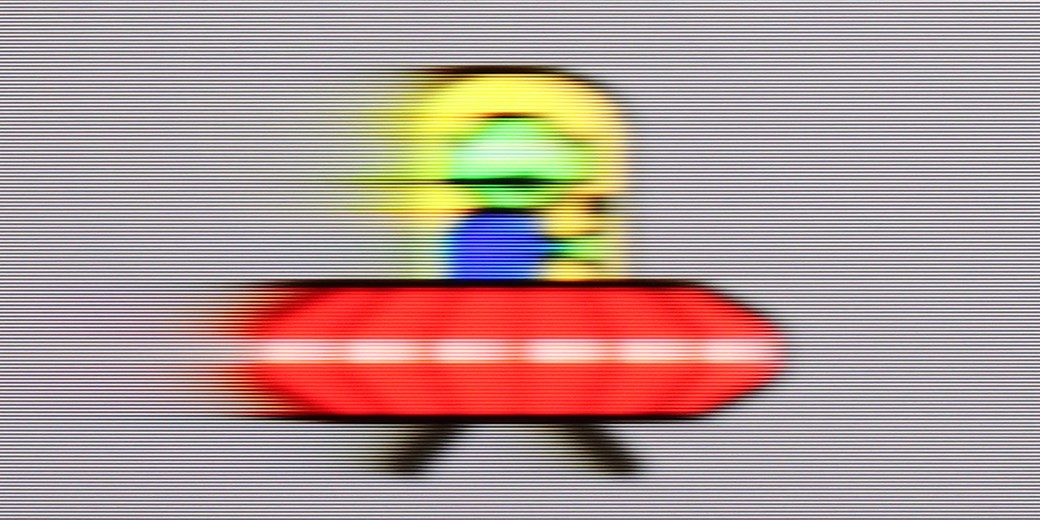

Sony X85L, equipped with a 120 Hz panel, will meet the expectations of a wide range of users – from sports and gaming fans to movie enthusiasts. Movie lovers will surely appreciate the presence of one of the best motion smoothing systems, known as Motionflow. This system offers adjustment using smoothness and clarity sliders – smoothness is responsible for fluid motion, eliminating the stuttering effect, while clarity enhances the sharpness of fast scenes, reducing blur.
“Speed” – this word was most frequently mentioned during our tests of the U7Q PRO. The television is equipped with a 165 Hz panel, which in itself is impressive – especially considering we’re talking about a mid-range model. Of course, PC gamers will benefit the most from its full capabilities, but even during everyday viewing, it’s clear that this is a fast and efficient panel. Like most modern televisions, the U7Q PRO can also enhance the smoothness of films that were originally recorded at 24 frames. In the menu, we find a slider that allows us to adjust the effect to our own preferences – from a more cinematic feel, with subtle motion, to a stronger smoothing with the characteristic “soap opera effect.”
Console compatibility and gaming features
7.8/10
8.5/10
- ALLM
- VRR
- VRR range48 - 120Hz48 - 288Hz
- Dolby Vision Game Mode
Yes, high input lag
- Correct implementation of HGIG
- 1080p@120Hz
- 1440p@120Hz
- 4K@120Hz
- Game bar

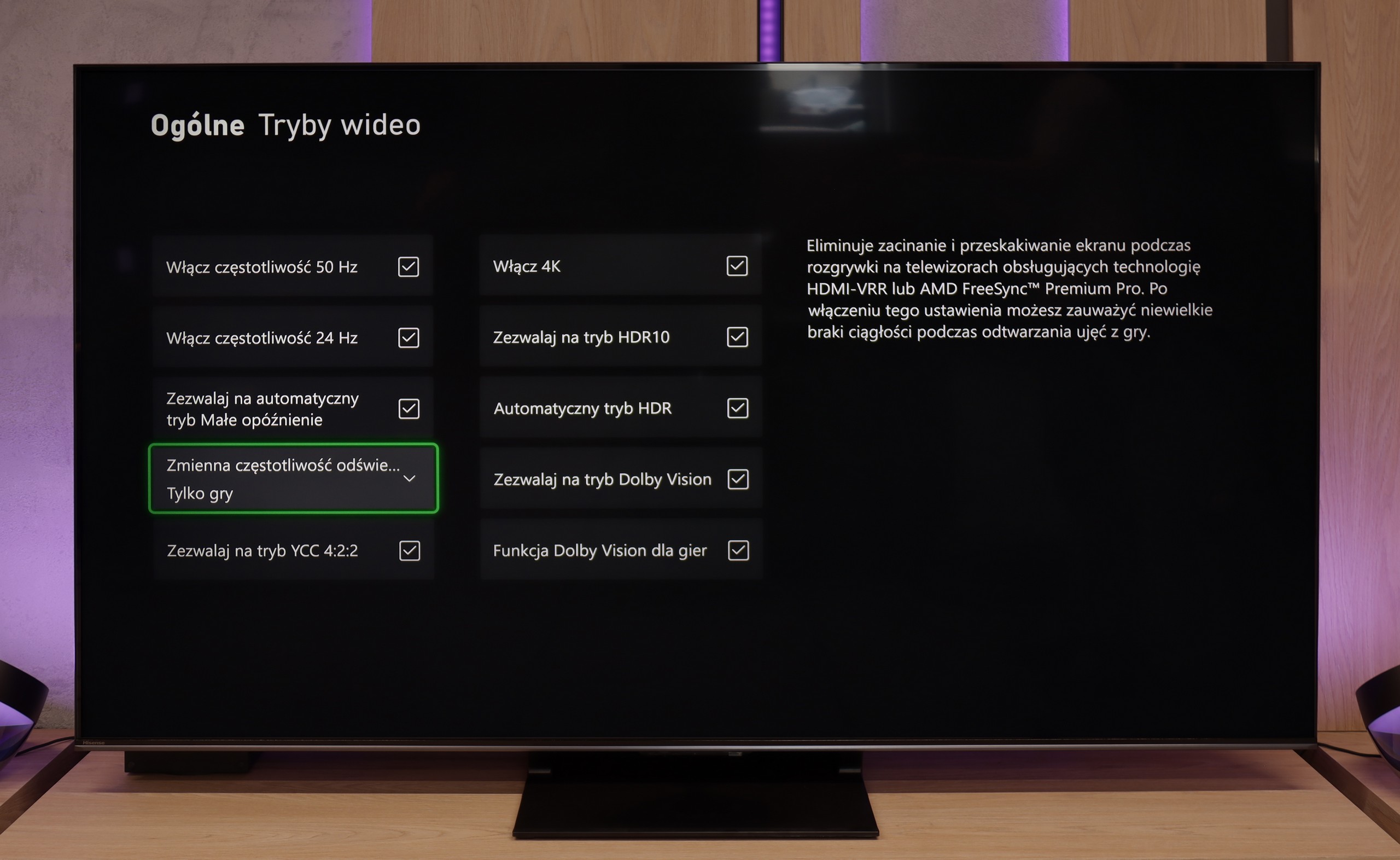



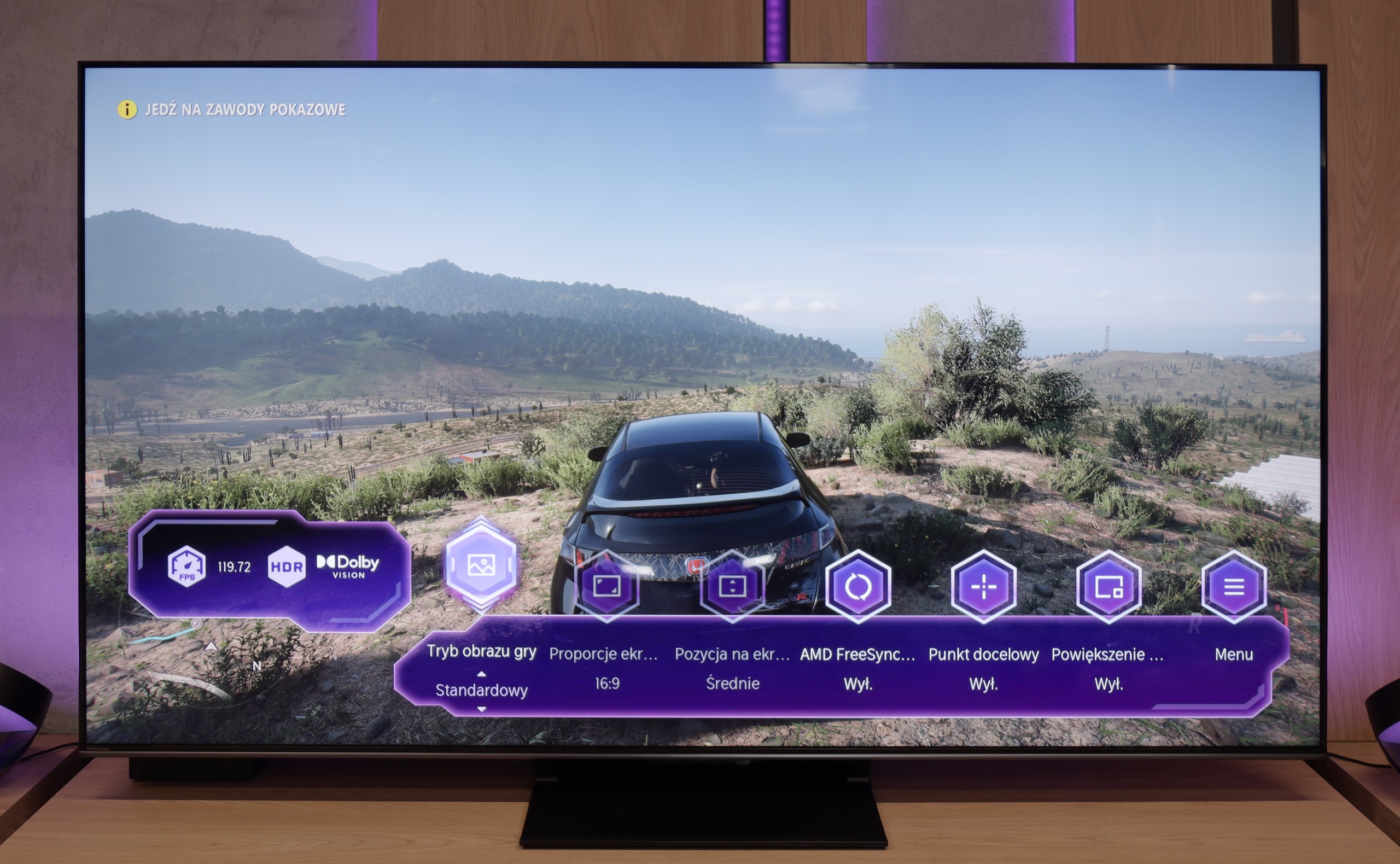

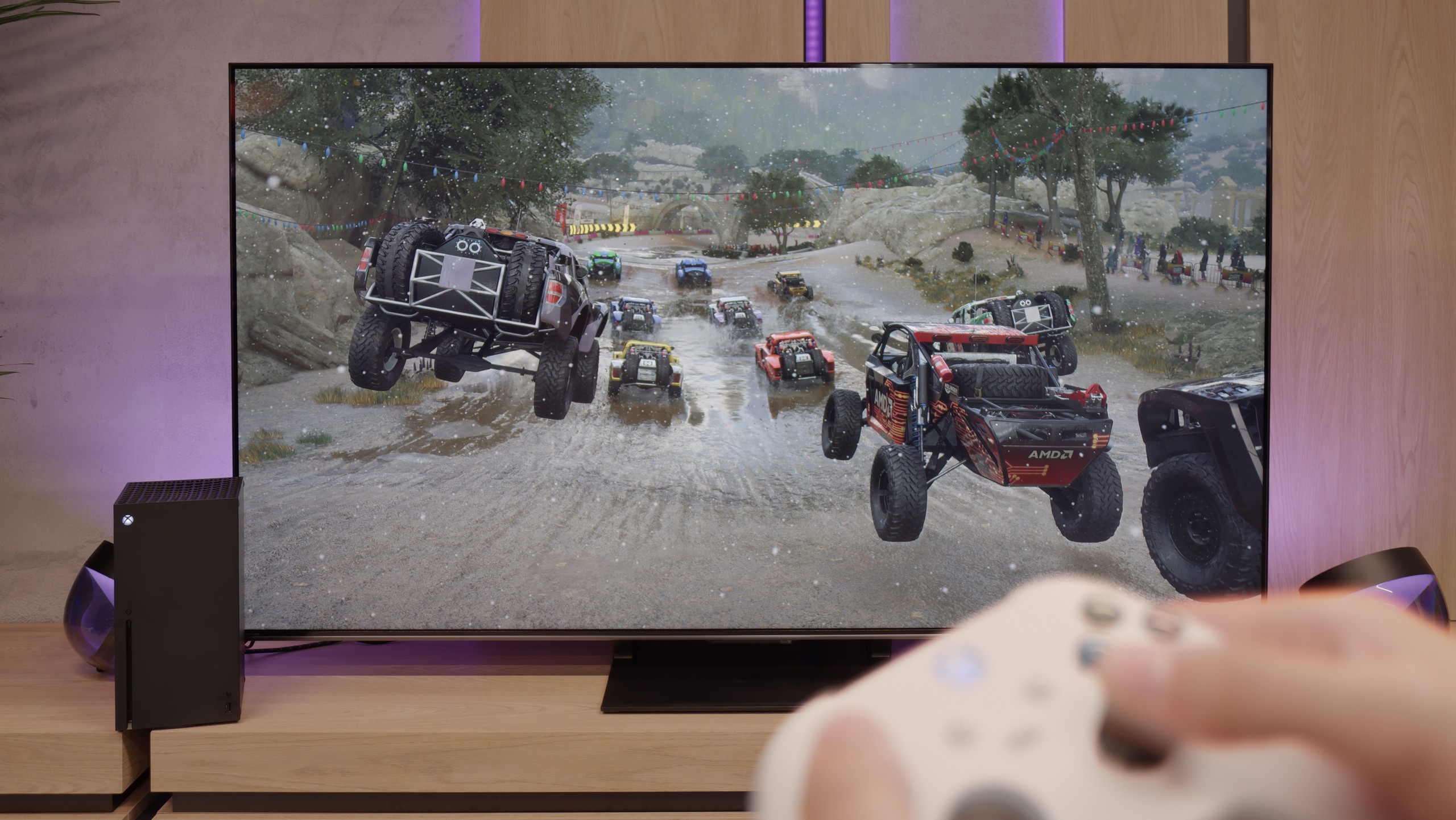
Sony X85L offers a fairly solid set of features for gamers, making it an attractive choice for gaming enthusiasts. First and foremost, the television has a 120 Hz panel, which translates to smooth and dynamic image display, ideal for both fast-paced action games and more demanding sports titles. It is equipped with two HDMI 2.1 ports with full bandwidth of 48 Gb/s, allowing for the full capabilities of next-generation consoles to be utilised. Additionally, Sony X85L supports VRR (variable refresh rate) technology, which helps reduce stuttering and artifacts during gameplay, ensuring a smooth experience. The television also supports G-Sync, which is particularly beneficial for gamers using NVIDIA graphics cards, allowing for screen refresh rate synchronization with GPU performance, eliminating screen tearing. It’s worth mentioning the Game Bar feature, which facilitates quick access to important game-related settings, such as VRR, brightness levels, or display modes, making it convenient and useful during gameplay.
However, there are some limitations. The television does not support HGiG, which may be a downside for some gamers, as HGiG optimises HDR effect rendering in games, providing a more authentic visual experience. Additionally, the Dolby Vision mode, although available, is not practical for gaming due to very high input lag.
Hisense U7Q PRO is a TV that seems to have been designed with gamers in mind. We have practically everything that can be expected from a gaming screen: variable refresh rate (VRR), automatic mode (ALLM), and as many as four HDMI 2.1b ports with full bandwidth of 48 Gb/s. Additionally, there’s a clear and quite functional Game Bar, as well as a well-implemented Dolby Vision GAMING mode that works seamlessly with Xbox Series S and X consoles.
Sounds like the ideal? Well, almost. Unfortunately, Hisense has still not implemented the HGiG feature, which is the system's tone mapping limitation on the TV's end. This means that when configuring HDR brightness on the console, we do it “by eye” or look for settings in online guides, as the screen does not display its actual brightness range. It’s a shame – because HGiG makes it easier to match the console to the TV and helps avoid overexposed or too dark scenes in HDR games.
Fortunately, the other elements work very well. Input lag is low, responsiveness is excellent, and the handling of other features is faultless. And although not everything worked perfectly, the U7Q PRO can still be confidently recommended to gamers.
Input lag
9.1/10
9.8/10
SDR
HDR
Dolby Vision
Generally speaking, the input lag on the Sony X85L is very good, which is crucial for smooth gameplay and quick reactions in games. In standard modes, particularly when using HDMI 2.1 and playing at 4K resolution at 120 Hz, the input lag is minimal.
Unfortunately, the Dolby Vision mode is an exception to this rule. In this case, the input lag reaches as high as 95 ms. Such a high level of latency makes the Dolby Vision mode practically unplayable, as responses to commands are noticeably delayed.
In terms of signal delay, the Hisense U7Q PRO performs exceptionally well. For 120 Hz content, the input lag stays below 10 ms, which translates to a lightning-fast response – the screen almost instantly reacts to our movements, something console and PC gamers will particularly appreciate. With 60 Hz content, the situation looks a bit worse, as the response time doubles – this is natural and applies to virtually all televisions. Nevertheless, it still remains below 20 ms, which can be confidently regarded as a very good result, almost close to perfection – and in practice, it’s hard to feel this during gaming.
Compatibility with PC
5.6/10
8.2/10

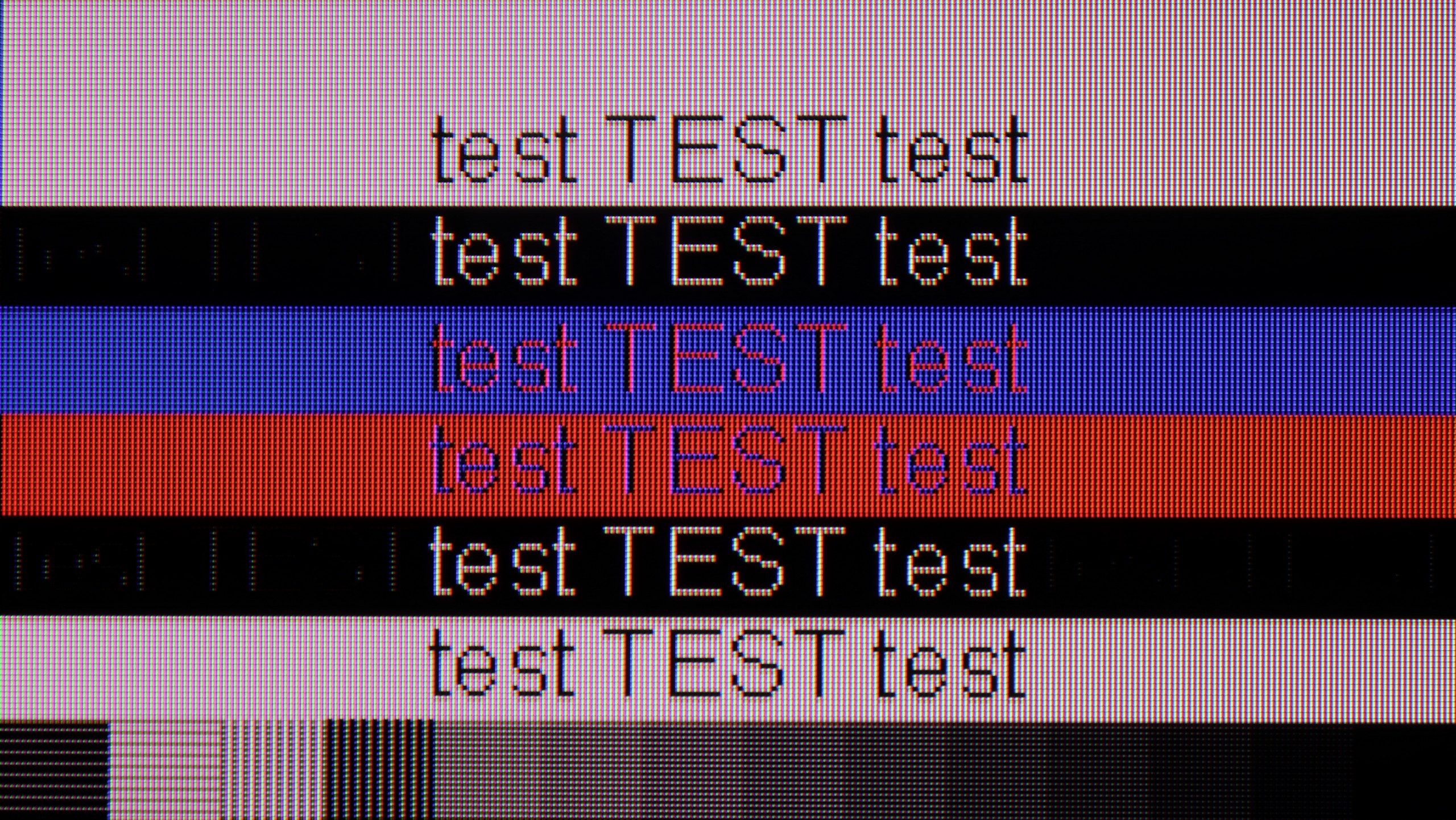
The collaboration of the television Sony X85L with a PC involves a bit of balancing between image quality and user comfort. If we want to use the TV for work, where clear fonts matter, we need to set the refresh rate to 60 Hz. In this mode, text looks good and doesn't strain the eyes, which is crucial if we plan to spend a longer time in front of the screen.
On the other hand, if the TV is intended for gaming, where we can take full advantage of its capabilities at 120 Hz, we must consider that the readability of the fonts noticeably decreases. The image becomes less sharp and the text harder to read, which can be frustrating. In short – Sony X85L works well for occasional connection to the computer, but if we need it daily for work and gaming, this compromise may not appeal to everyone.
Playing on a PC with the Hisense U7Q PRO is pure fun. Low input lag, a full 165 Hz in 4K and even 288 Hz in Full HD – these are numbers we wouldn't expect from a TV at this price. In this regard, it's really hard to nitpick. If someone is looking for a large screen for gaming from a PC – the U7Q PRO can confidently serve as a monitor. It performs a bit worse for everyday text work. Although chroma 4:4:4 is present, so theoretically, everything should look good. But in practice, grey text on a dark background looks strange – vertical lines are sharp, but horizontal ones can blur, disappear, or look slightly dimmed. However, it's fair to add that if you use the TV as usual – that is, from a few metres away – you're unlikely to notice this. The issue only becomes apparent when someone places the U7Q PRO on a desk, a metre from their face, and starts working with text or spreadsheets. If you plan to use it in this way – it’s worth keeping this in mind.
Viewing angles
3/10
3/10
Viewing angles on the Sony X85L, as is often the case with VA panels, are not the best. The picture looks great when you’re watching the TV head-on, but all it takes is a slight shift to the side to notice that the colours lose their vibrancy and the contrast noticeably weakens. This could be a problem if the TV is meant for watching in larger groups, where viewers are seated at different angles. For those who typically watch solo or from one central spot, it won't be a major downside, but the picture quality unfortunately drops when watching from the side.
In this regard, the U7Q PRO performs averagely. The television is equipped with a VA panel, which is not known for its wide viewing angles. When you start looking at the screen at an angle, the image clearly loses brightness and the colours start to fade. This is a completely normal phenomenon in VA panels without additional coatings to widen the angles – so if you plan to watch from the side or with a larger group, it's worth keeping this in mind. On the other hand, head-on – the image looks great, with deep blacks and very good contrast, much better than on IPS/ADS panels.
TV efficiency during daytime
6.5/10
6.2/10




Matrix brightness
Average luminance SDR
Hisense U7Q PRO: 472 cd/m2
Sony X85L: 571 cd/m2
The performance of the television Sony X85L during the day is quite decent. Its satin screen coating handles light reflection moderately well, which means that in bright rooms there may be some glare, but it is not bothersome enough to significantly interfere. The brightness in SDR mode at 570 nits is sufficient for comfortably watching TV during the day, even with natural light coming in through the windows. This ensures that colours remain vibrant and the picture is clearly visible, making the television suitable for everyday use.
As we mentioned earlier – the U7Q PRO is a really bright TV, especially when it comes to HDR content. For SDR materials, the TV dims a bit, but an average brightness level of around 500 nits is still a very solid result. This means you can easily watch TV or movies even in quite a bright room. Only under very extreme lighting – like direct strong sunlight on the screen – can visibility suffer a bit. Fortunately, Hisense has applied a satin anti-reflective coating that effectively reduces reflections, and the blacks maintain their depth even during the day. This makes a difference and allows for comfortable use of the TV in various lighting conditions.
Details about the matrix
Subpixel Structure:

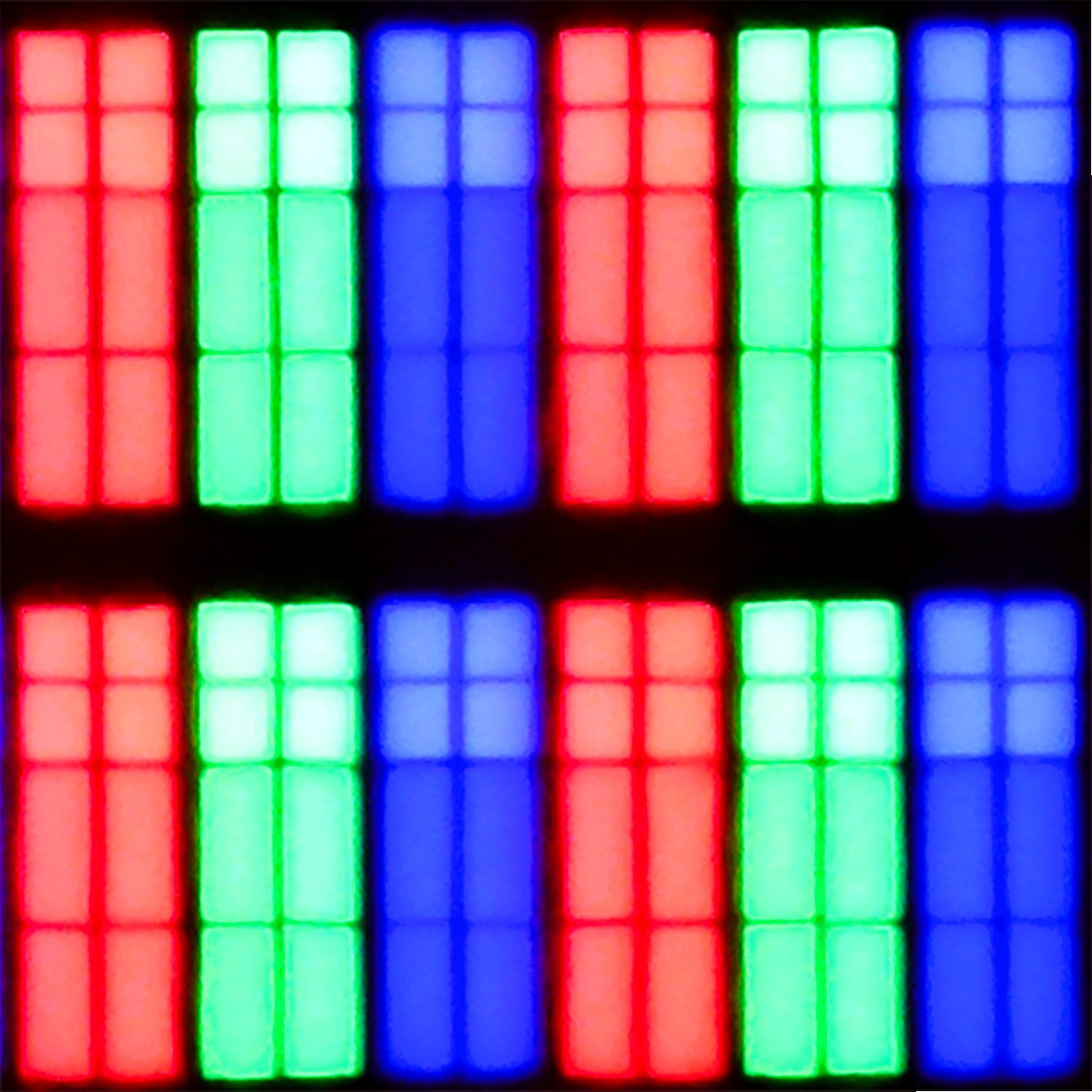
Panel uniformity:

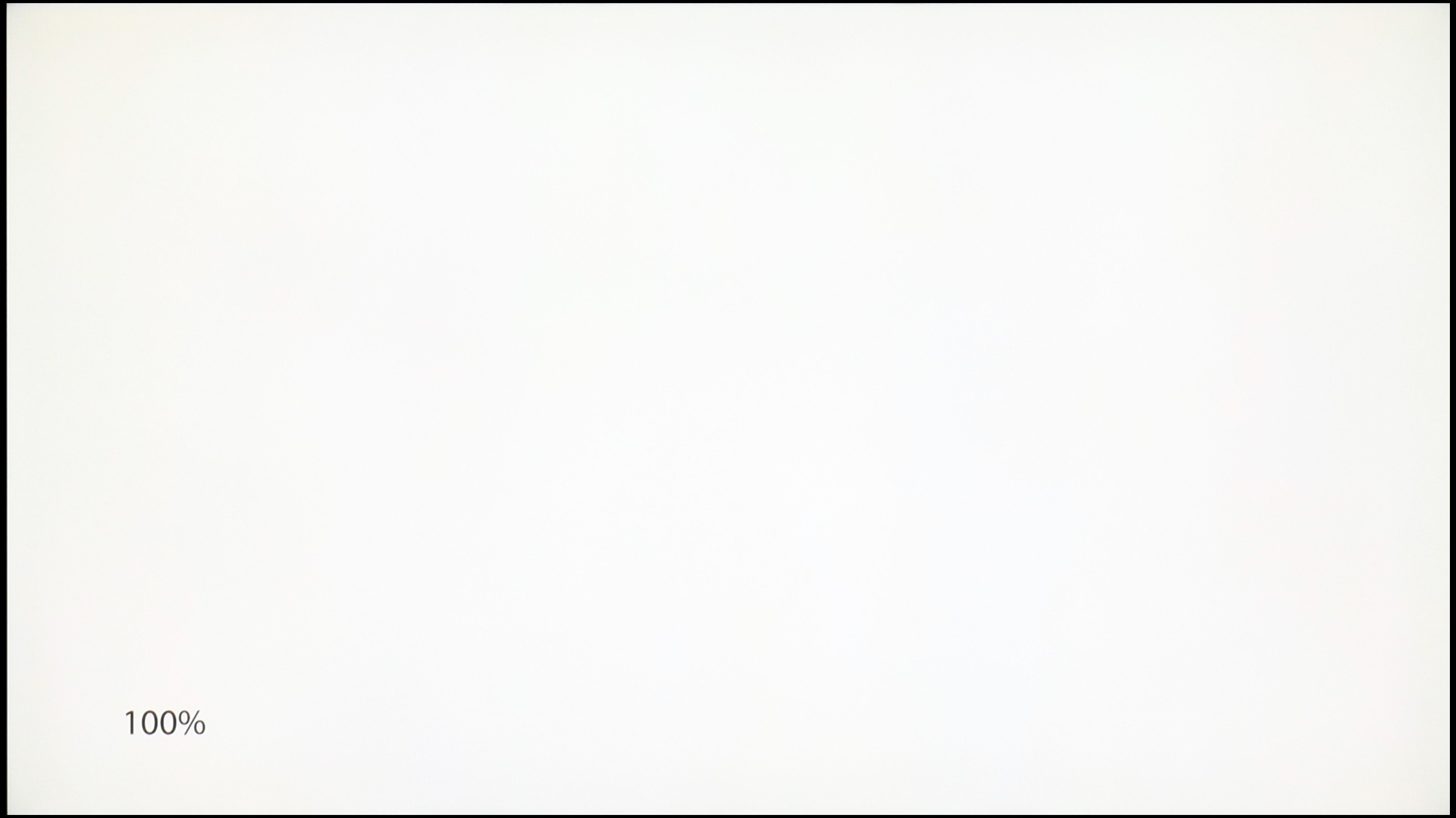
TV features
8.3/10
9.4/10
- HDMI inputs2 x HDMI 2.0, 2 x HDMI 2.1 48Gbps0 x HDMI 2.0, 4 x HDMI 2.1 48Gbps
- Other inputsRCA (Chinch)RCA (Chinch)
- OutputsToslink (Optical audio), eARC (HDMI), ARC (HDMI)Toslink (Optical audio), eARC (HDMI), ARC (HDMI), Mini-Jack (Headphones)
- Network InterfacesWi-Fi 2.4GHz, Wi-Fi 5GHz, Ethernet (LAN) 100MbpsWi-Fi 2.4GHz, Wi-Fi 5GHz, Ethernet (LAN) 100Mbps
- TV receptionDVB-T, DVB-T2, DVB-S, DVB-S2, DVB-CDVB-T, DVB-T2, DVB-S, DVB-S2, DVB-C
Classic features:
- Recording to USB (terrestrial TV)
- Recording programming
- Picture in Picture (PiP)
- RF remote control (no need to aim at the screen)
- Backlit remote control
- Teletext
- Audio only mode
- Possibility to connect Bluetooth headphones to the TV
- Possibility to simultaneously use Bluetooth headphones and the TV speaker
Smart features:
- AirPlay
- Screen mirroring (Windows Miracast)
- Wyszukiwanie głosowe
- Voice search in native language
- Ability to connect a keyboard and mouse


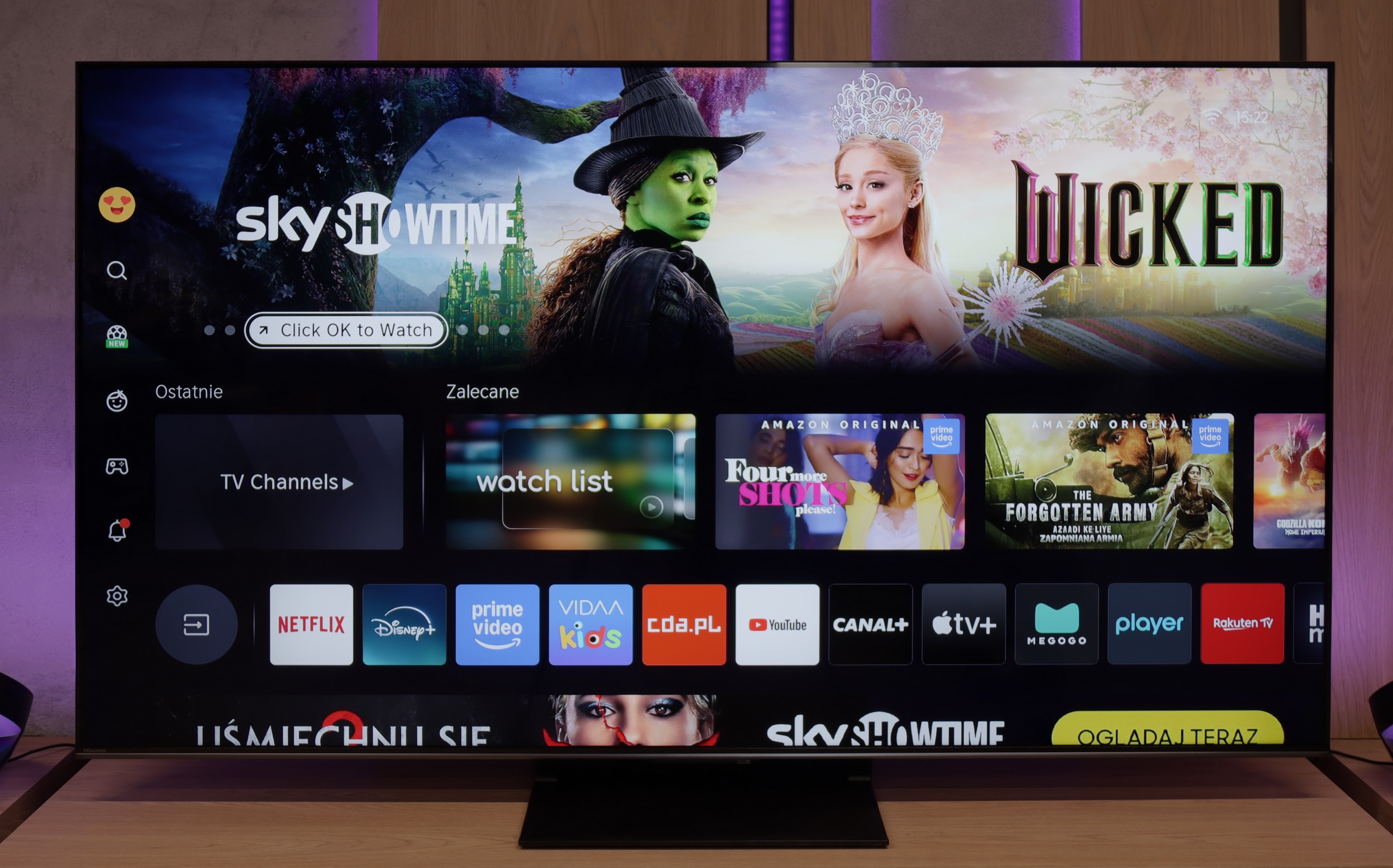
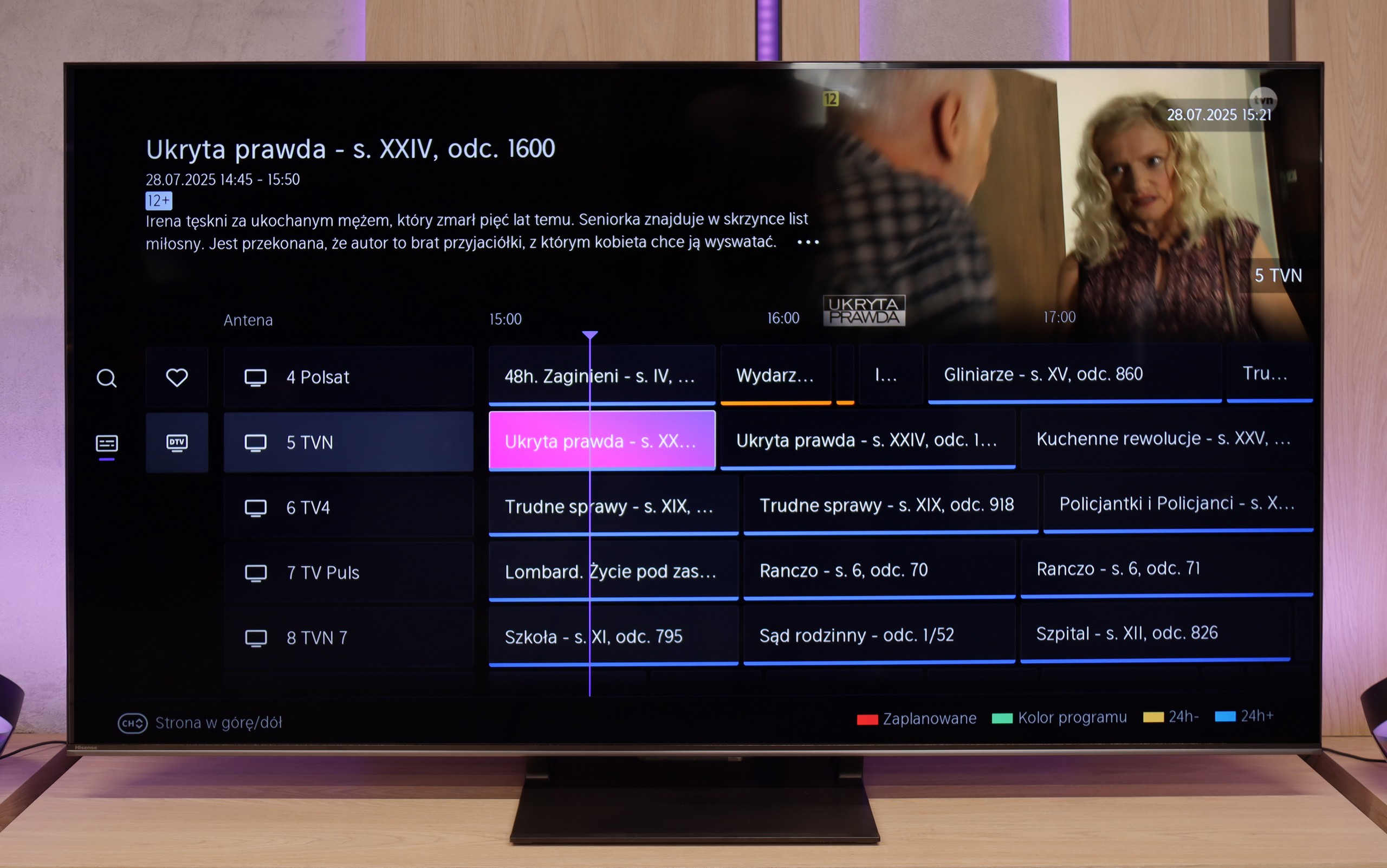
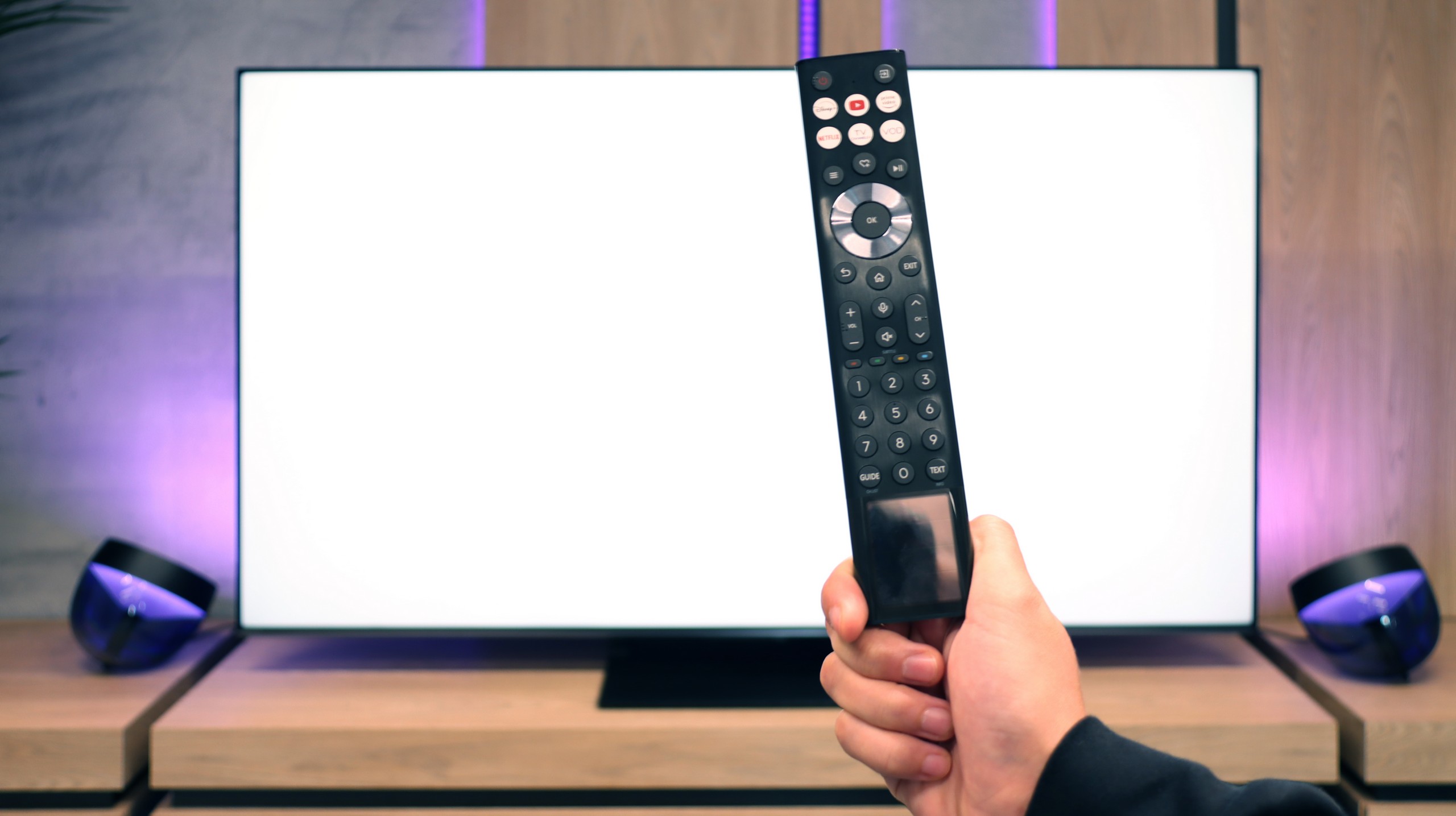

Sony X85L operates on the Google TV system, which is a significant advantage for many users. The television offers wide access to apps, and using streaming platforms is smooth and user-friendly. The interface is intuitive and easy to master, allowing for quick switching between apps and searching for favourite content. Google TV allows for personalization of the home screen, enabling each user to tailor it to their preferences. Google Assistant further enriches the experience by offering voice control and quick changes to settings or searching for films without using the remote.
In terms of user features, Sony X85L offers many useful options. The television has the capability to record programs, which is a great convenience for those wanting to watch their favourite content at any time. AirPlay support allows seamless streaming of content from Apple devices, which iPhone and iPad owners will appreciate. In addition, with built-in Bluetooth, various devices such as headphones or keyboards can be connected. However, one drawback is the absence of the PiP (picture in picture) function, which may disappoint users who prefer multitasking on the screen.
The design of the Sony X85L TV, while perhaps not the slimmest, is sturdy and elegant. The metal base with adjustable legs is one of its strong points, allowing for the height and width of the television to be adjusted to fit various furniture and spaces. This practical solution enhances the interior and adds a modern character to it.
Classic features of U7Q PRO
If you plan to use the television in a more "classic" way, that is, for watching daily programs or connecting headphones, the Hisense U7Q PRO has almost everything you could expect. The television easily supports recording to USB, you can connect headphones via Bluetooth, and the remote control is backlit, which is still not standard even in more expensive models. While many people today are foregoing these classic features in favour of streaming apps, it's good to know that the U7Q PRO still does this well and without compromises (aside from the lack of PiP functionality).
SmartTV System: Vidaa
When it comes to smart features, in Europe this model runs on the VIDAA system. The system operates smoothly, has a built-in web browser, supports voice control (also in Polish), and includes AirPlay, which will please users of Apple devices. However, it should be noted that VIDAA is a closed system, so you won't find all the popular apps that we've become accustomed to with Android TV or Google TV. Before purchasing, it's worth checking whether the apps you actually use are available.
Playing files from USB
8.7/10
8.2/10
Supported photo formats:
Maximum photo resolution:

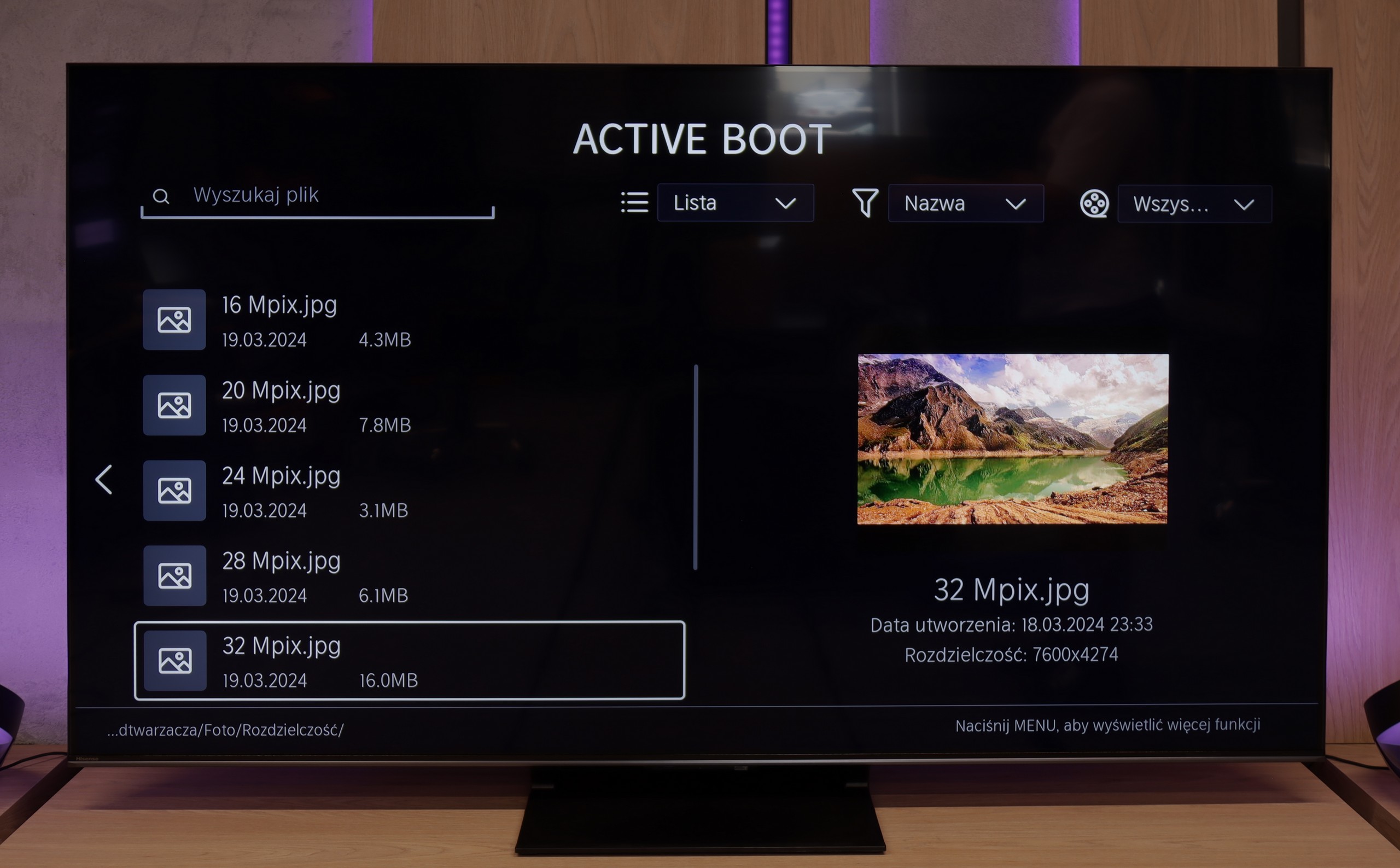
Sony X85L handles playback of most popular file formats from USB without any issues, which is a big plus for those who often access external content. However, it's worth mentioning a minor drawback – the built-in player does not allow for changing the font colour in subtitles, which may be troublesome for some. Fortunately, thanks to the extensive Google TV system, users have a wide range of options. Alternative media players can be easily installed, offering more personalisation options.
The built-in media player in the VIDAA system worked very efficiently and seamlessly on our U7Q PRO unit. The television had no trouble reading external video and audio files, as well as subtitles, making it convenient to watch movies from a USB drive or external hard drive. Most popular formats worked flawlessly, so there was no need to convert anything. The only complaint is a certain selectiveness in handling high-resolution images – not all of them opened. Therefore, you will find a detailed list of supported image resolutions (Mpix) in our comparison table.
Apps
9.6/10
7.7/10














































Sound
6.9/10
7.8/10
- Subjective sound quality:6.9/107.8/10
- Dolby Digital Plus 7.1:
- Dolby True HD 7.1:
- Dolby Atmos in Dolby Digital Plus (JOC):
- Dolby Atmos in Dolby True HD:
- DTS:X in DTS-HD MA:
- DTS-HD Master Audio:
The sound on the Sony X85L is good – it's clear across the entire scale, allowing enjoyment of both dialogue and music. The bass, though light, is noticeable and adds some depth to the overall sound. However, it should be emphasised that this is a subjective assessment – some may be satisfied with this sound profile, while others might require additional audio equipment to fully experience the stronger tones and a more spacious sound.
For built-in TV speakers, the U7Q PRO sounds surprisingly good. The audio is clear, with distinct mid and high tones, and while the bass is somewhat limited, it doesn’t completely disappear. One could say that for "TV speakers," the level is more than satisfactory. However, it’s worth noting that in our test unit, we couldn't play DTS:X audio from local files – the TV simply doesn’t support it. This means that if you’re counting on a cinematic surround effect solely from its built-in speakers, there might be a bit of a letdown. Thankfully, the TV seamlessly transmits DTS signals to an external amplifier, so if you have a home theatre – just connect it up and everything works as it should.


